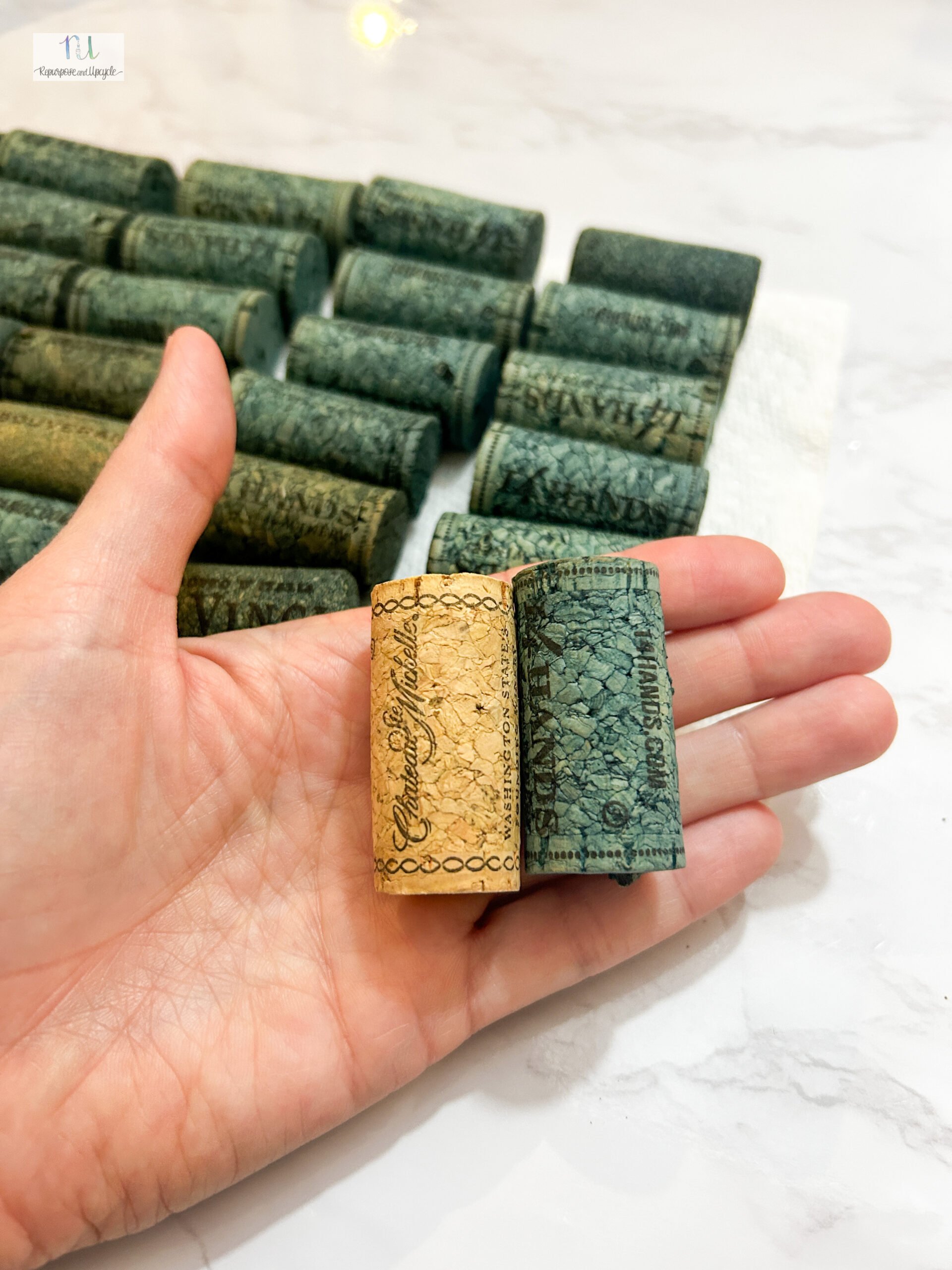A year in review of our painted laminate kitchen cabinets. See how they have held up WITH primer and WITHOUT primer.
I’ve received a lot of questions over the past few months about how my painted laminate kitchen cabinets have held up. I decided that this post is long overdue being that it’s been well over a year since my first painting laminate cabinets with no prep work has been published. So pull your sleeves up and sit down, I’m going to lay out the good, bad and ugly when it comes to a year in review of how I painted my laminate kitchen cabinets. Also, I’ll be discussing painting laminate WITH primer and painting laminate WITHOUT primer.

Let me first recap the two posts that I will be reviewing and share a before picture.
Most of you probably don’t realize that I’ve written two posts with two different techniques on how I painted our laminate kitchen cabinets.
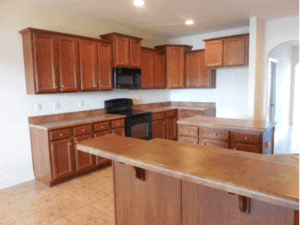
My first post on painting the cabinets with primer, then milk paint and then the top coat was a lot more expensive and time consuming than my other technique.
My second post, which included painting laminate cabinets without primer, was obviously much cheaper and less time consuming.
So which technique has held up better? Take one guess…
Should you paint laminate kitchen cabinets with primer or without primer?
The first technique I used to paint our kitchen cabinets (with primer) has held up like a champ.
Unfortunately I can’t say the same of the second technique, although it hasn’t been terrible.
Most of you are probably thinking, duh, adding primer is a no brainer.
Well, that’s what I thought too before I started to paint my cabinets. The first technique I used with the primer held up so well, that I thought, maybe the primer isn’t necessary.
I’ve done A LOT of research on how to paint laminate cabinets, and 4-5 times out of 10, the blogger or writer did not use primer.
So my justification was “ok, if half of bloggers who have done this before DID NOT use primer, and their cabinets look great, then maybe I’ll be ok without it.”
To understand how to paint kitchen cabinets or cupboards, you need to understand a little about laminate.
You can see a full video tutorial on how to paint laminate cabinets the right way here.
Here is the problem; the outer part of laminate cabinets (most of the time this is a product called melamine, which is a form of plastic) are created from a thin film. This film is bonded to the exterior surface of the pressed wood and it’s created to be resistant to anything bonding to it. So you can see why primer is very important when trying to paint over the “film,” which is practically plastic.
If you have real wood cabinets, and you sand them a little to create a rough surface for the paint to stick to, you might be able to get away without using primer.
For real laminate surfaces, always use a good bonding primer
If I had thought this through the second time I painted my cabinets, I would have used primer. I should have stuck with my gut and done the job right like I did the first time, even though it would have taken more time.
Honestly, my cabinets have been OK without the primer, but not perfect. Let me share a few pictures.
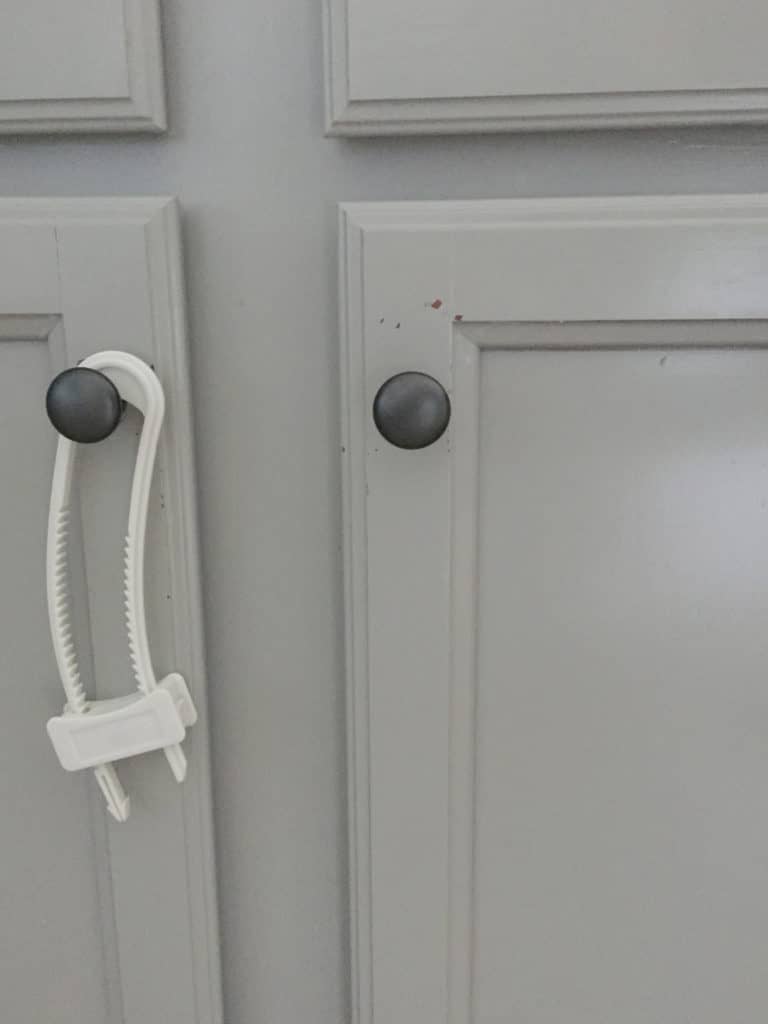
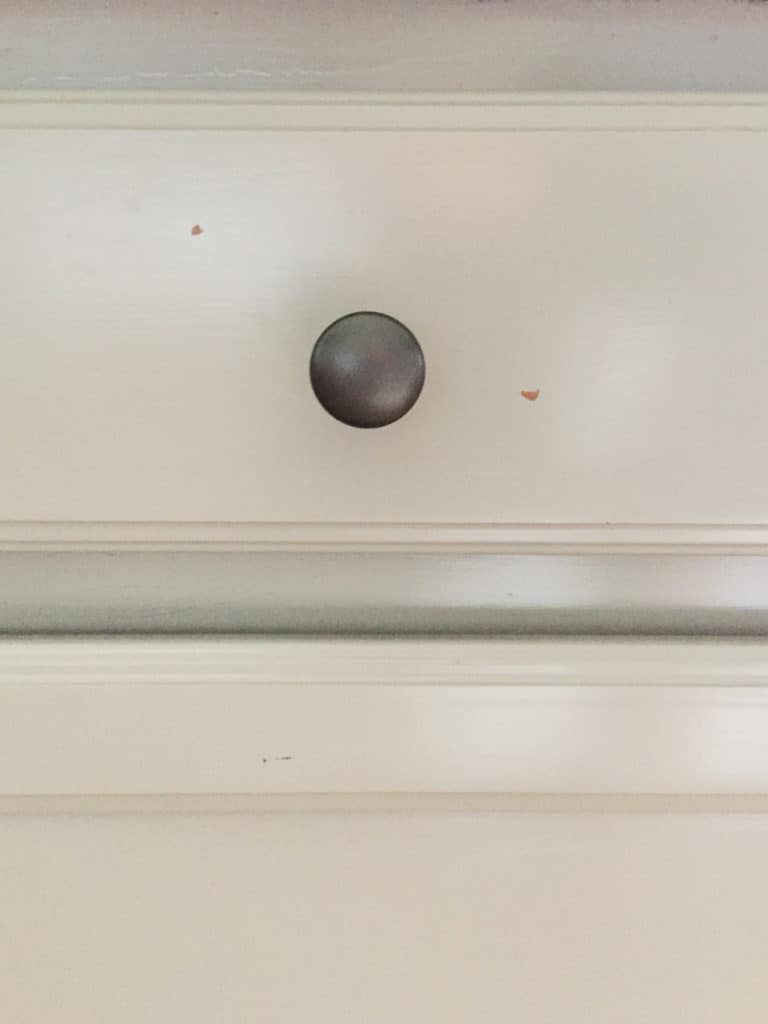
Pictured above are a few of the areas that have already “chipped” off. As you can see the child lock has rubbed the paint off of one of the cabinets. The other cabinet is frequently used so my guess is a fingernail scratched that paint off.
Of all my painted gray cabinets, those are the only two areas that have scraped off so far. Although this is very minor and can be touched up, it is still a pain knowing that the paint will peel at the nick of a fingernail.
On the other hand, my white painted cabinets on the island are virtually indestructible.
My kids are in and out of these cabinets daily because this is where I keep their utensils. I wipe them down about every other day with a clorox wipe. I can scrape them with my fingernail and the paint or top coat doesn’t budge. If I didn’t know better, I would have never know they were painted. Seriously, the bond of paint to the cabinets is that strong.
So what do they look like today?
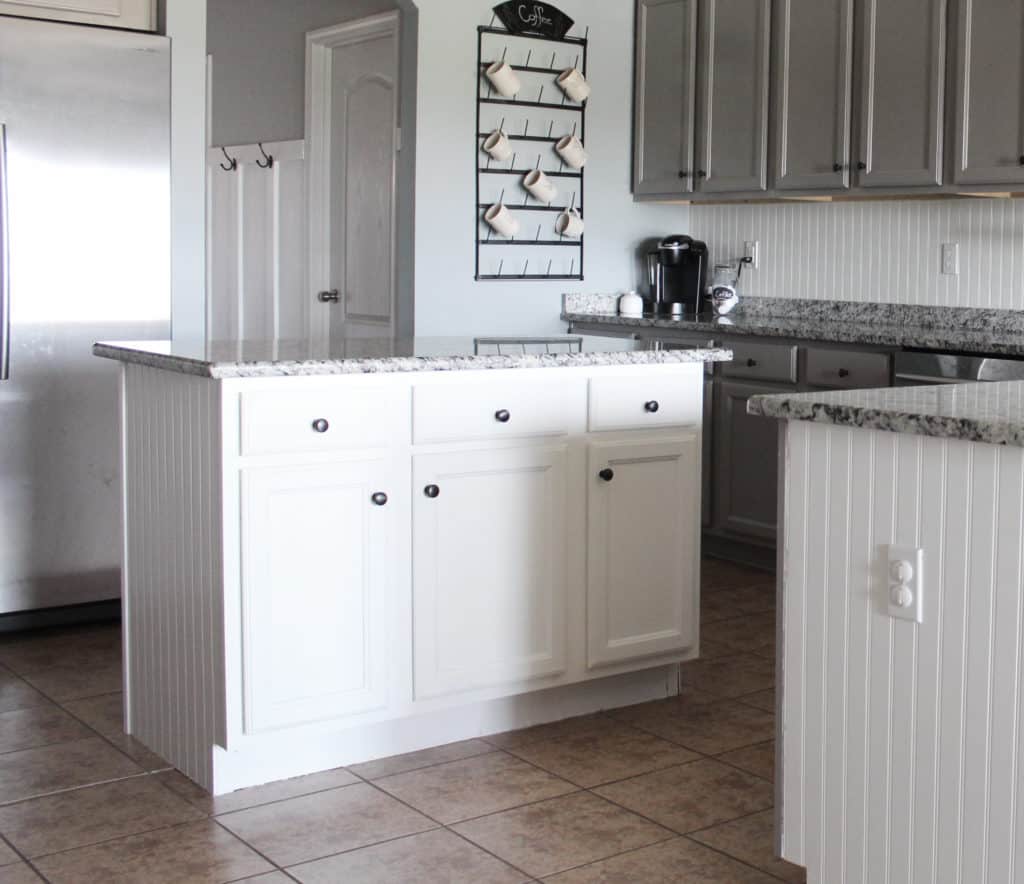
They look practically the same as the day I painted them.
which paint bonded better, milk paint or the latex cabinet paint?
Disclosure; this post contains affiliate links. As an Amazon Associate I earn from qualifying purchases. This disclosure statement refers to the rest of the Amazon links in this post. See more on my disclosure page.
I do believe the milk paint bonded a little better. But, that’s a hard question because I painted the milk paint on to primer, not the cabinets themselves. I was pleased with how well the latex cabinet paint bonded directly to the cabinet though.
I’ll recap my experience below:
Pros and Cons of painted kitchen cabinets WITH primer;
Method: Primer, milk paint and top coat.
Pros
- bonded very well
- has held up beautifully
- no scrapes or scratch marks at all
Cons
- expensive – the kitchen Island used almost one quart of milk paint (costs almost $40 per quart)
- time consuming
Pros and Cons of painted kitchen cabinets WITHOUT primer;
Method: Latex cabinet paint and top coat.
Pros
- quick and easy technique
- bonded fairly well to the cabinets
- cheap- I painted two coats (some areas three coats) to all my cabinets (minus the kitchen island) and only used 3/4 a gallon.
Cons
- paint will scrape off fairly easily
- requires frequent touch up maintenance
There it is, my full year in review of the painted laminate kitchen cabinets with primer and without primer.
If I could do it over my choice would be to prime, use the cabinet paint (the milk paint will break the bank) and at least two coats of either top coat. For more specifics, please refer to my original posts linked in the beginning of this post.
Thanks for stopping by! I hope you’ve found this article helpful and if you did, I would love for you to pin the image below.
Lindsey**



